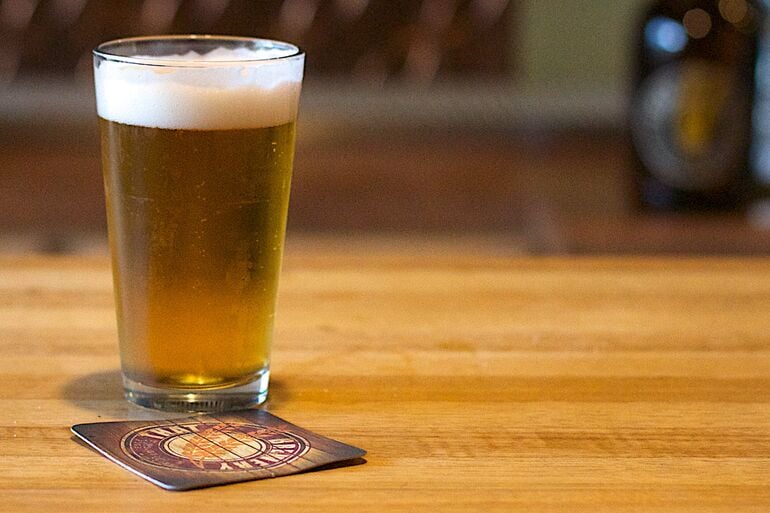Start 14-Day Trial Subscription
*No credit card required

What Are the Most Common Beer Flavor Profiles?
The level of flavor variety among the various beers produced around the world is truly astounding – especially when you consider the fact that beer traditionally contains just four ingredients: malt, yeast, hops and water. Just by doing something as simple as selecting a different strain of yeast or a different type of hops, you can change the character of a beer completely. That’s why the greatest beer connoisseurs are always so restless; it takes real effort to try everything that’s out there!
So, what exactly can you expect to experience when you begin exploring the various beers of the world? Although there are certainly some unusual beers that truly defy classification, most of the world’s beers fall into a few general flavor profiles. In this article, we’ll explain what those flavor profiles are like. We’ll also suggest some beer styles that typically have those flavor profiles.
Don’t forget that if you’re planning to taste several different beers sequentially in order to experience all of the different beer flavor profiles mentioned in this article, it’s a good idea to have a palate cleanser on hand to avoid olfactory fatigue. Try plain soda water or unsalted crackers. If you’re a smoker, stay away from cigarettes during your tasting session. Instead, try a plain menthol e-liquid from a company like Premium Vape Australia.
Let’s dive in and learn more about the most common beer flavor profiles.
1. Dry, Fizzy and Crisp
Experience it with these beer styles: Wheat ale, pale lager, blonde ale, amber lager
A beer that tastes dry, fizzy and crisp will typically be one that’s lighter in color and has a relatively low alcohol content. Those qualities – along with the fact that a dry and crisp beer is an excellent palate cleanser in its own right – combine to make a beer that’s dry and crisp an excellent first choice for a tasting session. This flavor profile also pairs well with mildly flavored food such as sushi and salads. Within the dry and crisp flavor category, you can find beers that are a bit more malt-forward with distinctively yeasty notes. You can also find beers with pronounced floral aromas resulting from the use of noble hops.
2. Bitter and Hops-Dominant
Experience it with these beer styles: IPA, English bitter
There’s hardly a beer connoisseur on Earth who hasn’t tried an IPA, and the experience of drinking such a hops-dominant beer is truly unforgettable. IPA was developed in part because of the antimicrobial nature of hops, which has a documented history as a key part of the brewing process going back as far as 1,000 years. From a flavor standpoint, hops can help to temper the sweetness of the malt in beer. It also helps beer last longer without spoiling, which was particularly important before refrigeration was available. When you increase the hops in a recipe to extreme levels, though, you end up with something that can survive the trip from Great Britain to India by sea – and that’s why India Pale ale exists. Some IPAs are so hoppy that they are almost medicinally bitter with powerful notes of resin or turpentine. On the slightly less hoppy end of the spectrum, you’ll get distinct floral and citrus notes in this category of beer.
3. Sweet and Malt-Dominant
Experience it with these beer styles: English ale, bock
If IPA represents the most hops-dominant extreme of the spectrum of beer flavor profiles, this category represents the other extreme. Although it’s rare to find a malt-dominant beer that doesn’t contain at least some hops, there are some beers in this category with almost no detectable flavor of hops at all. In a malt-dominant beer, you’ll notice flavor notes reminiscent of bread, crackers and yeast. Because malt is so sweet, the flavor profile of a malt-dominant beer can be almost like a dessert if very few hops are used in the recipe. A malt-dominant beer that’s extremely low in hops will feature strong notes of dried fruit.
4. Balanced Sweetness with Dark, Roasted Notes
Experience it with these beer styles: Stout, porter
This beer flavor profile is achieved with the use of dark roasted malt. Although roasted malt has a strong flavor that can tend to overwhelm the hops, you’ll find that beer in this flavor category doesn’t taste overwhelmingly sweet in the way that malt-dominant beers sometimes can. That’s because, although it isn’t always easy to taste the hops, stouts and porters are typically well hopped in order to present a more balanced flavor. In this category of beer, the extent to which the malt is roasted is the factor that has the greatest effect on the overall flavor profile. Just like with coffee, it’s possible to roast the malt to such a dark color that, in the final beer, you’re really tasting the roast rather than the malt. When you drink a beer with a moderately roasted malt, you’ll taste notes of cream and coffee. With a darker malt, you’ll taste notes of strong chocolate and dried fruit. It’s even possible to roast malt over a fire to produce a beer with a smoky flavor profile.
5. Fruity and Spicy
Experience it with these beer styles: Wheat beer, lambic
Wheat beer and lambic are both made using a blend of malted wheat and barley, and they’re both brewed with yeast strains that tend to give the final product a fruity aroma and flavor. Those characteristics are particularly evident in lambic, which is brewed using wild yeast found in the environment and is sometimes aged for several years in vessels such as wine barrels before it’s bottled. The yeast imparts a range of fruity and spicy notes like clove, banana, cider and citrus, and brewers often enhance those notes by adding flavoring agents such as orange peels and coriander seeds. Aging beer in a wine cask further accentuates the fruity character by adding notes of fig, raspberry, strawberry and raisin. Beer in this flavor quality pairs well with strongly flavored seafood like lobster and mussels.



